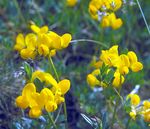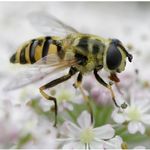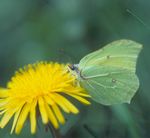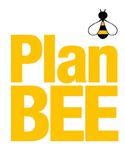Management of Wildflower-rich Grassland habitats for pollinators and other insects - Buglife
←
→
Page content transcription
If your browser does not render page correctly, please read the page content below
B-LINES FACT SHEET 4
Management of Wildflower-rich Grassland
habitats for pollinators and other insects
How should I manage my grassland for
insect pollinators?
This will depend on the type of grassland you have,
and the current wildlife (including plants, insect and bird
populations) found both in it and in the local area. From
a practical perspective the type of grazing animals or
agricultural machinery you have to manage the land will
influence what you can do.
Managing the grassland as
pasture (through grazing) is a
good option when managing for
insect populations as it provides
structural diversity (i.e. different
heights of plants, bare ground and
dense tussocks). Be careful with the van
s
© Rob E
Wildflower meadow © Robert Goodison
timing and intensity of grazing to allow
plants to flower and seed, and to ensure that some
How are grasslands managed? taller grown vegetation remains into the winter months
Most grasslands are farmed, either to provide grazing to provide a refuge for insects.
for livestock or cut for hay/silage to provide winter Managing land as a hay meadow will provide very
animal feed. Both grazing and cutting management valuable nectar/pollen over the summer period,
are important for managing wildflower-rich grasslands both for insects which live in the meadow and in the
and the insects they support; they remove annual
surrounding countryside.
vegetation growth, preventing an increase in soil
Ideally cater for the requirements
nutrients. They also prevent the growth of tree
and shrubs, which if left to grow would result in the of many insects, by creating a mix
grassland slowly turning into woodland. of different types of grassland
(managed in different ways)
across a farm or wider landscape.
.uk
What do insects need from my Don’t forget that other habitats on
co
-o
n.
us
oc
grasslands? surrounding land such as hedgerows, ©R az ww
w. ph
scattered trees and shrubs and wetter
There are a very large number of insect species with
areas will also provide important food and nesting
a variety of different needs. Unless you have rare
resources for the insects found on your grasslands (see
species with known habitat requirements the best
grassland management).
advice is to develop a variety of vegetation conditions
and encourage a range of plant species. It is
important to provide conditions which can support the
What are the most important changes
whole life-cycle of insects, including the provision of
I should make to the management of
food (pollen and nectar over a long flowering season),
nesting ground, over wintering cover and suitable
my land?
vegetation/ground for hunting/foraging (see grassland The wildflowers and insects already present in existing
management). grasslands are likely to be adapted to the currentcutting or grazing management, so it is advisable not l By carefully planning your grazing and cutting
to make rapid changes; in the short-term this may management you can easily produce suitable
lead to loss of species and only gradual establishment conditions for the plants and invertebrates that live
of new ones. However a few simple changes will and grow in the grassland (see advice on managing
help protect and enhance both wildflower and insect habitats).
populations:
l Reducing or stopping fertiliser inputs will benefit
How can I produce the most suitable
many wildflower species by slowing the growth of
conditions for insects?
grasses
You can use both grazing and cutting management
l Reducing or targeting the use of herbicides, and
(and a mixture of the two) to change the structure of
ceasing pesticide use will help both wildflower and
your grasslands. Some of the benefits to insects of
insect populations
different management techniques are shown in the
table below.
What? Grazing Pasture Cutting Meadow Why? How?
Mix of vegetation PPP P Tussocks provide valuable Cattle or sheep grazing in
structure (needed shelter and over wintering autumn/winter, with lighter
at a small and areas grazing in the spring/
larger scale) Taller vegetation, helps summer months. Cattle
some insects locate mates. grazing will provide greater
Also likely to increase diversity of sward heights
flowering than using sheep or horses.
Bare ground PP Provides areas for hunting Cattle grazing/trampling will
insects and also for nesting provide small open areas.
Short turf PP P Often valuable for foraging Graze with sheep or ensure
insects high levels of grazing.
Manure/dung PP P Provides food source for a Produced by livestock
range of beetles (these need to be free of
avermectins).
Diverse range of PPP PPP Provides range of pollen, Can be achieved by both
plant species nectar and other plant sensitive grazing and
material for feeding meadow management.
Long flowering PP P Provides nectar and pollen Well managed pasture can
season supply from spring through provide a long flowering
to autumn season. Meadows only
provide a short (1-2 months)
flowering season, but
leaving unmown areas/
banks can extend flowering.
Pollen and nectar PP PPP A good range of flowering Both pastures and
source plants meadows can provide
valuable pollen and nectar.
Heavy summer grazing
will reduce flowering, so
autumn/winter grazing is
preferred option.
Scattered trees and P Provide both valuable Scattered shrub cover
shrubs shelter for invertebrates and can be encouraged and
also valuable food (shrubs maintained in pastures with
supply important nectar) careful planning of grazing
period, stocking levels and
choice of grazing animals.Common bird’s-foot trefoil (Lotus corniculatus) © Dr Chris Gibson Brimstone (Gonepteryx rhamni) © Dr Chris Gibson Hornet hoverfly (Volucella zonaria) © Ian Dawson
Further useful guidance includes:
This is one of a series of B-Lines Fact Sheets which
provides guidance as to how to restore, recreate and Advice on Managing BAP habitats (see Buglife)
manage wildflower meadows and pastures. Other fact
sheets include: Meadow Management (see Bumblebee Conservation)
l Sheet 1 - Grasslands for Insect Pollinators and other
Butterflies and farmland (see Butterfly Conservation)
wildlife
l Sheet 2 - Wildflower-rich grassland restoration Illustrated guide to managing neutral pasture for wildlife
l Sheet 3 - Wildflower-rich grassland creation TIN088 (see Natural England)
l Sheet 5 - Seeding the B-Lines; selecting species Illustrated guide to lowland chalk and limestone
and seeds
grassland TIN082 (see Natural England 2)
Soil and agri-environment schemes: interpretation of soil
analysis TIN036 (see Natural England)
Sward Enhancement: choice of methods – TIN062 –
(see Natural England 2)
Seed sources for Grassland restoration and
Re-Creation in Environmental Stewardship
(see Natural England 3)
Arable reversion to species-rich grassland: establishing
a sown sward TIN067 (see Natural England 4)
Information on Environmental Stewardship is available
from Natural England
(see Natural England - Farming and land stewardship)
Information on the Campaign for the Farmed
Environment can be found at (see www.cfeonline.org.uk)
Supported by the Co-operative’s Plan Bee Campaign
www.co-operative.coop/Plan-Bee/
Buglife – The Invertebrate Conservation Trust www.buglife.org.uk
First Floor, 90 Bridge Street, Peterborough, PE1 1DY
Registered in England at First Floor, 90 Bridge Street, Peterborough, PE1 1DY.
Telephone: 01733 201210 Email: info@buglife.org.uk Company no. 4132695. Registered charity no. 1092293. Scottish charity no. SC040004.
07/2012You can also read


























































